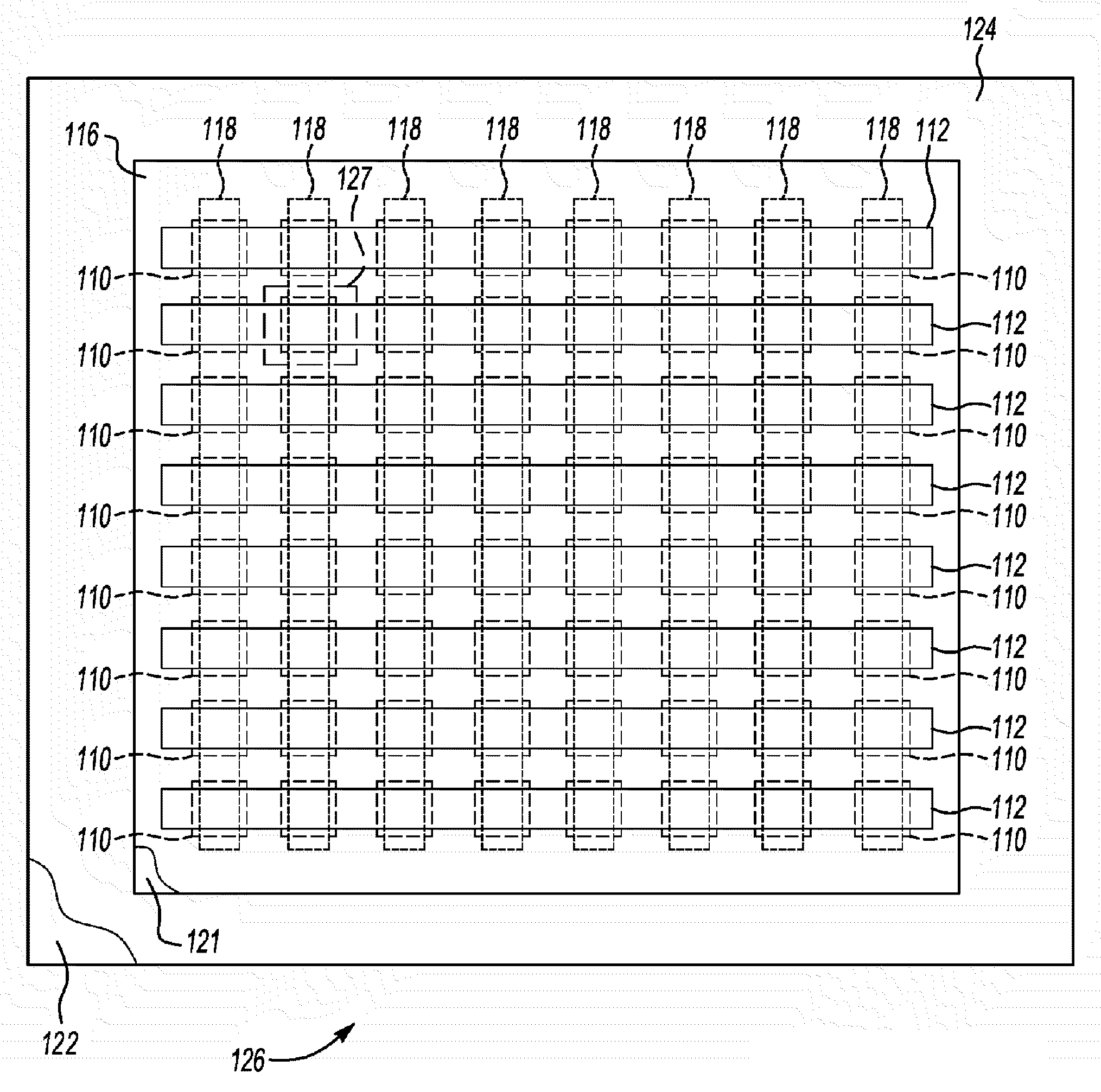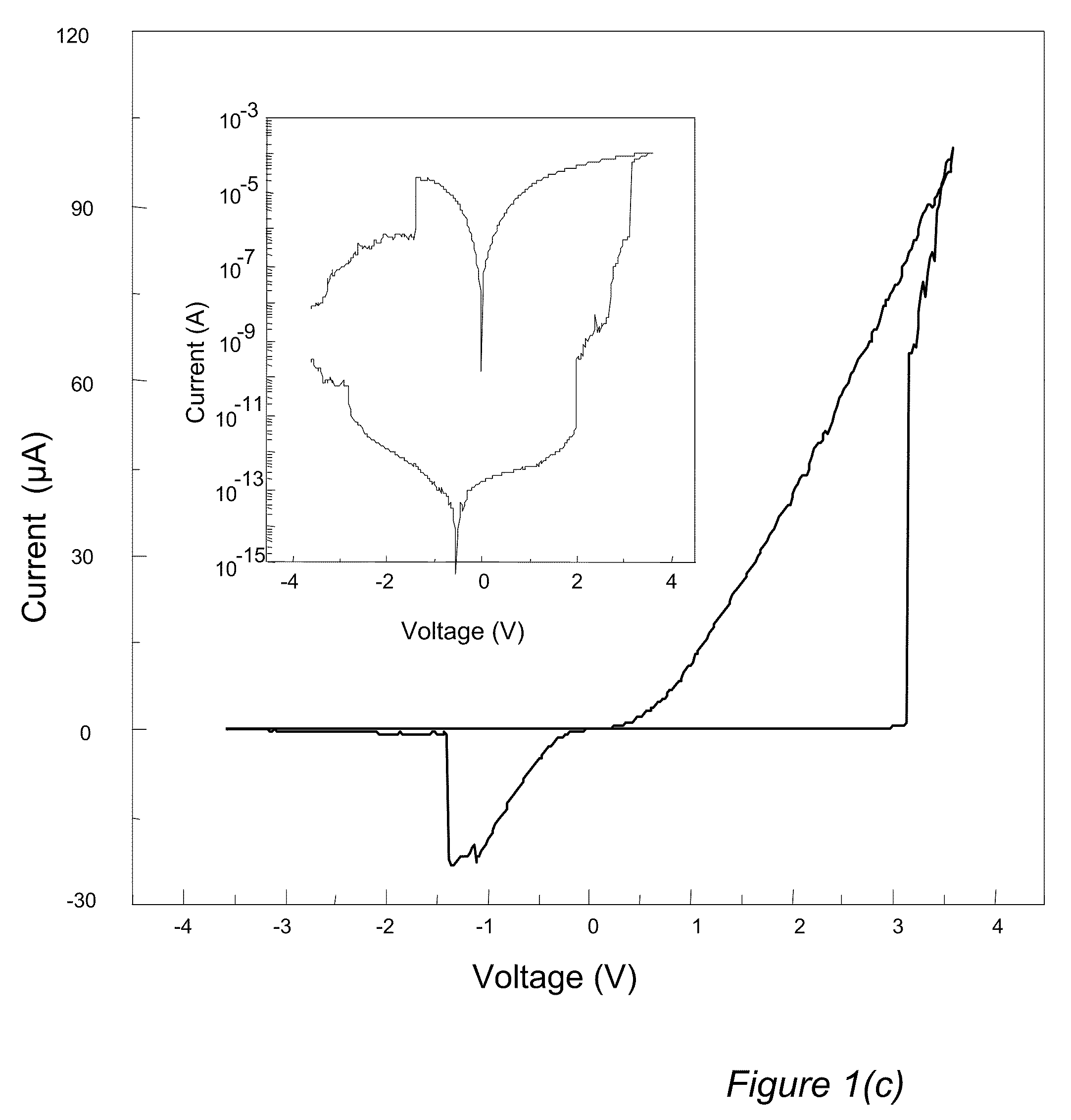Silicon-based nanoscale resistive device with adjustable resistance
a nano-scale, resistive device technology, applied in semiconductor devices, digital storage, instruments, etc., can solve the problems of limiting production yields and reducing the resistance of a-si structures
- Summary
- Abstract
- Description
- Claims
- Application Information
AI Technical Summary
Benefits of technology
Problems solved by technology
Method used
Image
Examples
Embodiment Construction
[0032]FIG. 1(a) depicts a non-volatile solid state resistive device 10 comprising a nanoscale a-Si structure 14 that exhibits a resistance that can be selectively set to various values, and reset, all using appropriate control circuitry. Once set, the resistance value can be read using a small voltage that is sufficient in magnitude to determine the resistance without causing it to change. Although the illustrated embodiment uses a-Si as the resistive element, it will be appreciated that other non-crystalline silicon (nc-Si) structures can be used, such as amorphous poly-silicon. Thus, as used herein and in the claims, non-crystalline silicon (nc-Si) means either amorphous silicon (a-Si), amorphous poly-silicon (poly-Si) that exhibits controllable resistance, or a combination of the two. Furthermore, although much of the discussion herein applies also to larger scale a-Si structures such as those having one or more dimensions in the micron range, the illustrated embodiment is an a-S...
PUM
 Login to View More
Login to View More Abstract
Description
Claims
Application Information
 Login to View More
Login to View More - R&D
- Intellectual Property
- Life Sciences
- Materials
- Tech Scout
- Unparalleled Data Quality
- Higher Quality Content
- 60% Fewer Hallucinations
Browse by: Latest US Patents, China's latest patents, Technical Efficacy Thesaurus, Application Domain, Technology Topic, Popular Technical Reports.
© 2025 PatSnap. All rights reserved.Legal|Privacy policy|Modern Slavery Act Transparency Statement|Sitemap|About US| Contact US: help@patsnap.com



